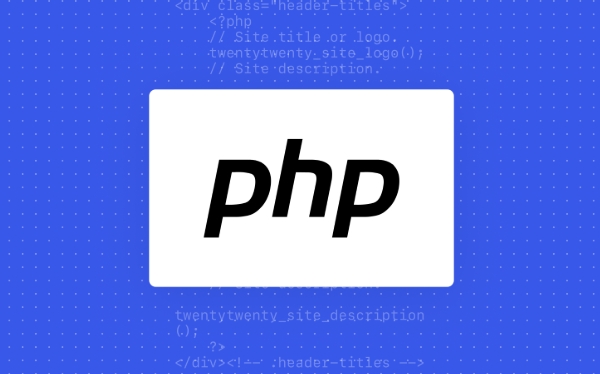There are three ways to remove unnecessary characters in PHP: 1. Use str_replace to delete specified characters, which is suitable for clearly knowing which characters to delete; 2. Use preg_replace to delete characters that comply with regular rules, which is suitable for processing a specific type of character such as non-alphanumeric characters; 3. Use trim, ltrim or rtrim to remove the beginning and end of string characters, which is suitable for cleaning user input and other scenarios.

Sometimes when processing strings, we need to remove some unwanted characters. PHP provides a variety of ways to implement this function, the key is to choose the right way according to different scenarios.

Use str_replace to delete the specified character
If you know which characters to delete, str_replace is one of the most straightforward ways. It allows you to pass in an array or string, replacing the characters that appear in the target string with empty or something else.
For example, you want to remove commas and dots from strings:

$string = "Hello, world. This is a test!"; $cleaned = str_replace(['.', ','], '', $string); echo $cleaned;
The output result is:
Hello world This is a test!
This method is suitable for situations where there are not many characters and you know which characters to delete.

Use preg_replace to delete characters that comply with certain rules
If you are facing a specific type of characters, such as all non-alphanumeric characters, punctuation marks, etc., using regular expressions will be more efficient. You can use preg_replace at this time.
For example, remove all non-alphanumeric characters:
$string = "User@Name#123"; $cleaned = preg_replace('/[^a-zA-Z0-9]/', '', $string); echo $cleaned;
Output:
UserName123
The key here is to write the regular expressions right:
-
[^a-zA-Z0-9]means "all characters except letters and numbers" - If you still want to keep spaces, you can change it to
/[^a-zA-Z0-9 ]/
Remember to escape special characters, otherwise you may make an error.
Combining trim or ltrim / rtrim to remove the beginning and end characters
If you want to remove only certain characters at the beginning or end of a string, instead of all positions, you can use the trim series function.
for example:
$string = "##This is a string##"; echo trim($string, '#'); // Output "This is a string"
This is especially useful when cleaning up user input, such as removing unnecessary slashes, quotes, etc.
You can choose to use:
-
trim(): Remove the front and back -
ltrim(): Go to the left only -
rtrim(): Go to the right only
Basically these are the common methods. Each method has applicable scenarios: use str_replace for simple replacement, use regular preg_replace for complex rules, and use trim family for the beginning and end processing. With these functions, it will not be too difficult to process unnecessary characters in strings.
The above is the detailed content of PHP remove specific characters from a string. For more information, please follow other related articles on the PHP Chinese website!

Hot AI Tools

Undress AI Tool
Undress images for free

Undresser.AI Undress
AI-powered app for creating realistic nude photos

AI Clothes Remover
Online AI tool for removing clothes from photos.

Clothoff.io
AI clothes remover

Video Face Swap
Swap faces in any video effortlessly with our completely free AI face swap tool!

Hot Article

Hot Tools

Notepad++7.3.1
Easy-to-use and free code editor

SublimeText3 Chinese version
Chinese version, very easy to use

Zend Studio 13.0.1
Powerful PHP integrated development environment

Dreamweaver CS6
Visual web development tools

SublimeText3 Mac version
God-level code editing software (SublimeText3)
 PHP Variable Scope Explained
Jul 17, 2025 am 04:16 AM
PHP Variable Scope Explained
Jul 17, 2025 am 04:16 AM
Common problems and solutions for PHP variable scope include: 1. The global variable cannot be accessed within the function, and it needs to be passed in using the global keyword or parameter; 2. The static variable is declared with static, and it is only initialized once and the value is maintained between multiple calls; 3. Hyperglobal variables such as $_GET and $_POST can be used directly in any scope, but you need to pay attention to safe filtering; 4. Anonymous functions need to introduce parent scope variables through the use keyword, and when modifying external variables, you need to pass a reference. Mastering these rules can help avoid errors and improve code stability.
 How to handle File Uploads securely in PHP?
Jul 08, 2025 am 02:37 AM
How to handle File Uploads securely in PHP?
Jul 08, 2025 am 02:37 AM
To safely handle PHP file uploads, you need to verify the source and type, control the file name and path, set server restrictions, and process media files twice. 1. Verify the upload source to prevent CSRF through token and detect the real MIME type through finfo_file using whitelist control; 2. Rename the file to a random string and determine the extension to store it in a non-Web directory according to the detection type; 3. PHP configuration limits the upload size and temporary directory Nginx/Apache prohibits access to the upload directory; 4. The GD library resaves the pictures to clear potential malicious data.
 Commenting Out Code in PHP
Jul 18, 2025 am 04:57 AM
Commenting Out Code in PHP
Jul 18, 2025 am 04:57 AM
There are three common methods for PHP comment code: 1. Use // or # to block one line of code, and it is recommended to use //; 2. Use /.../ to wrap code blocks with multiple lines, which cannot be nested but can be crossed; 3. Combination skills comments such as using /if(){}/ to control logic blocks, or to improve efficiency with editor shortcut keys, you should pay attention to closing symbols and avoid nesting when using them.
 How Do Generators Work in PHP?
Jul 11, 2025 am 03:12 AM
How Do Generators Work in PHP?
Jul 11, 2025 am 03:12 AM
AgeneratorinPHPisamemory-efficientwaytoiterateoverlargedatasetsbyyieldingvaluesoneatatimeinsteadofreturningthemallatonce.1.Generatorsusetheyieldkeywordtoproducevaluesondemand,reducingmemoryusage.2.Theyareusefulforhandlingbigloops,readinglargefiles,or
 Tips for Writing PHP Comments
Jul 18, 2025 am 04:51 AM
Tips for Writing PHP Comments
Jul 18, 2025 am 04:51 AM
The key to writing PHP comments is to clarify the purpose and specifications. Comments should explain "why" rather than "what was done", avoiding redundancy or too simplicity. 1. Use a unified format, such as docblock (/*/) for class and method descriptions to improve readability and tool compatibility; 2. Emphasize the reasons behind the logic, such as why JS jumps need to be output manually; 3. Add an overview description before complex code, describe the process in steps, and help understand the overall idea; 4. Use TODO and FIXME rationally to mark to-do items and problems to facilitate subsequent tracking and collaboration. Good annotations can reduce communication costs and improve code maintenance efficiency.
 Quick PHP Installation Tutorial
Jul 18, 2025 am 04:52 AM
Quick PHP Installation Tutorial
Jul 18, 2025 am 04:52 AM
ToinstallPHPquickly,useXAMPPonWindowsorHomebrewonmacOS.1.OnWindows,downloadandinstallXAMPP,selectcomponents,startApache,andplacefilesinhtdocs.2.Alternatively,manuallyinstallPHPfromphp.netandsetupaserverlikeApache.3.OnmacOS,installHomebrew,thenrun'bre
 How to access a character in a string by index in PHP
Jul 12, 2025 am 03:15 AM
How to access a character in a string by index in PHP
Jul 12, 2025 am 03:15 AM
In PHP, you can use square brackets or curly braces to obtain string specific index characters, but square brackets are recommended; the index starts from 0, and the access outside the range returns a null value and cannot be assigned a value; mb_substr is required to handle multi-byte characters. For example: $str="hello";echo$str[0]; output h; and Chinese characters such as mb_substr($str,1,1) need to obtain the correct result; in actual applications, the length of the string should be checked before looping, dynamic strings need to be verified for validity, and multilingual projects recommend using multi-byte security functions uniformly.
 Learning PHP: A Beginner's Guide
Jul 18, 2025 am 04:54 AM
Learning PHP: A Beginner's Guide
Jul 18, 2025 am 04:54 AM
TolearnPHPeffectively,startbysettingupalocalserverenvironmentusingtoolslikeXAMPPandacodeeditorlikeVSCode.1)InstallXAMPPforApache,MySQL,andPHP.2)Useacodeeditorforsyntaxsupport.3)TestyoursetupwithasimplePHPfile.Next,learnPHPbasicsincludingvariables,ech






